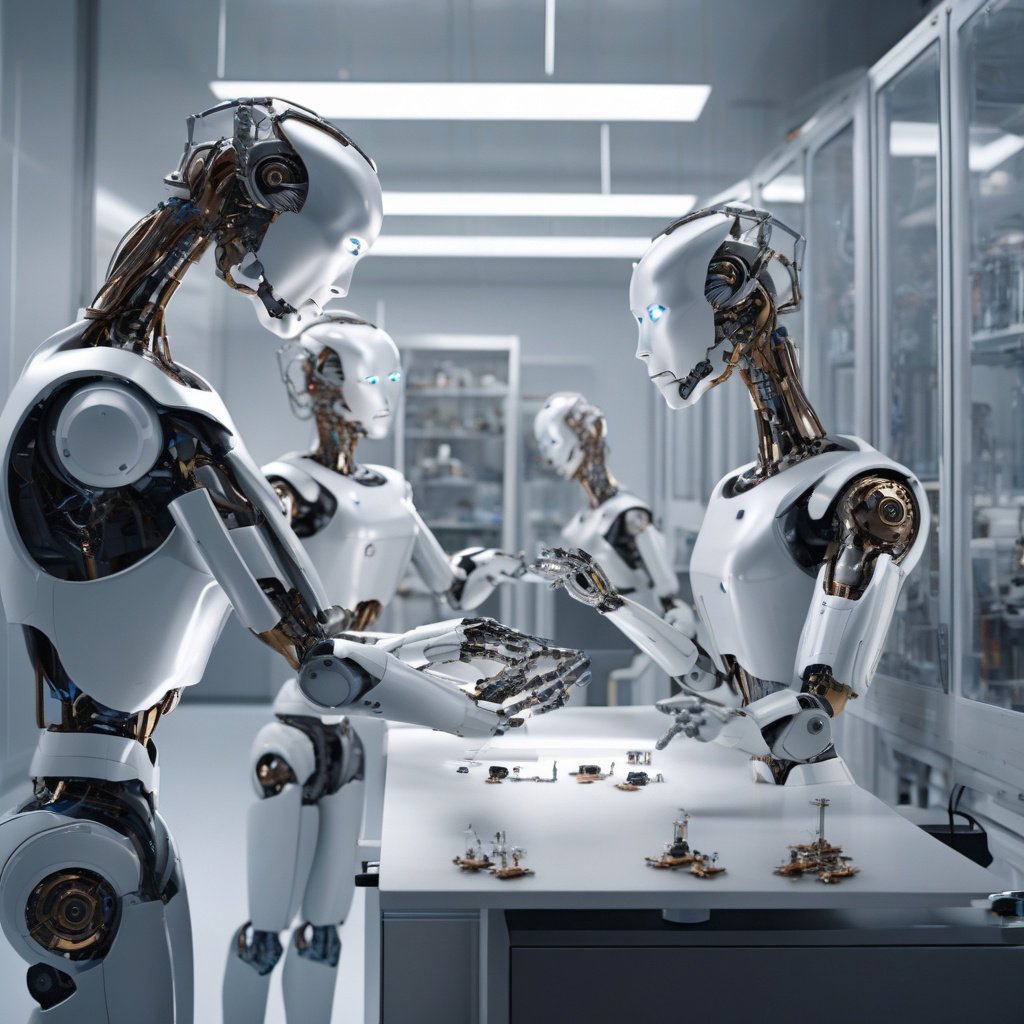Enhancing Efficiency: How Figure’s AI-Powered Humanoid Robots Are Revolutionizing Teamwork
Figure, a leading robotics company, has recently introduced a groundbreaking development in the world of robotics – humanoid robots that work collaboratively using shared artificial intelligence (AI). These cutting-edge robots are designed to perform a wide range of tasks in both household and industrial settings, showcasing a new level of efficiency and productivity in teamwork.
The integration of AI technology in humanoid robots marks a significant advancement in the field of robotics. By enabling robots to communicate and collaborate with each other through shared AI systems, Figure has unlocked a new realm of possibilities for automation. These robots can now work together seamlessly, dividing tasks based on their individual capabilities and coordinating their actions to achieve common goals.
In a household setting, AI-powered humanoid robots from Figure can revolutionize everyday tasks. Imagine a scenario where these robots collaborate to clean a house – while one robot handles vacuuming the floors, another can dust the furniture, and a third can take care of doing the dishes. By working together efficiently and autonomously, these robots can significantly reduce the time and effort required to maintain a clean and organized living space.
In an industrial environment, the implications of teamwork among AI-powered humanoid robots are even more profound. These robots can collaborate on complex manufacturing processes, streamlining production lines and maximizing efficiency. For example, in a factory setting, one robot can handle the assembly of components, while another robot focuses on quality control, and a third robot manages inventory – all working together seamlessly to ensure smooth operations and high productivity.
The benefits of teamwork among AI-powered humanoid robots extend beyond efficiency and productivity. By leveraging shared AI systems, these robots can also learn from each other and improve their performance over time. For instance, if one robot discovers a more efficient way to complete a task, it can share this knowledge with other robots in the network, allowing them to adapt and optimize their own processes accordingly.
Moreover, the collaborative nature of these robots opens up new possibilities for innovation and problem-solving. When faced with a complex task or unforeseen challenge, AI-powered humanoid robots can pool their resources and expertise to find creative solutions. This ability to think and act collectively enables these robots to tackle a wide range of tasks with flexibility and ingenuity.
As Figure continues to refine and expand its lineup of AI-powered humanoid robots, the potential applications of this technology are virtually limitless. From assisting with household chores to revolutionizing industrial automation, these robots are poised to transform the way we live and work. By harnessing the power of teamwork and AI, Figure is paving the way for a future where robots play an increasingly integral role in our daily lives.
In conclusion, the introduction of AI-powered humanoid robots from Figure represents a major milestone in the evolution of robotics. By demonstrating the power of teamwork through shared AI systems, these robots are reshaping our understanding of automation and collaboration. As we look ahead to a future where robots work alongside humans in harmony, Figure’s innovative approach serves as a testament to the endless possibilities that lie ahead.
#AI, #Robotics, #Teamwork, #Automation, #Innovation
